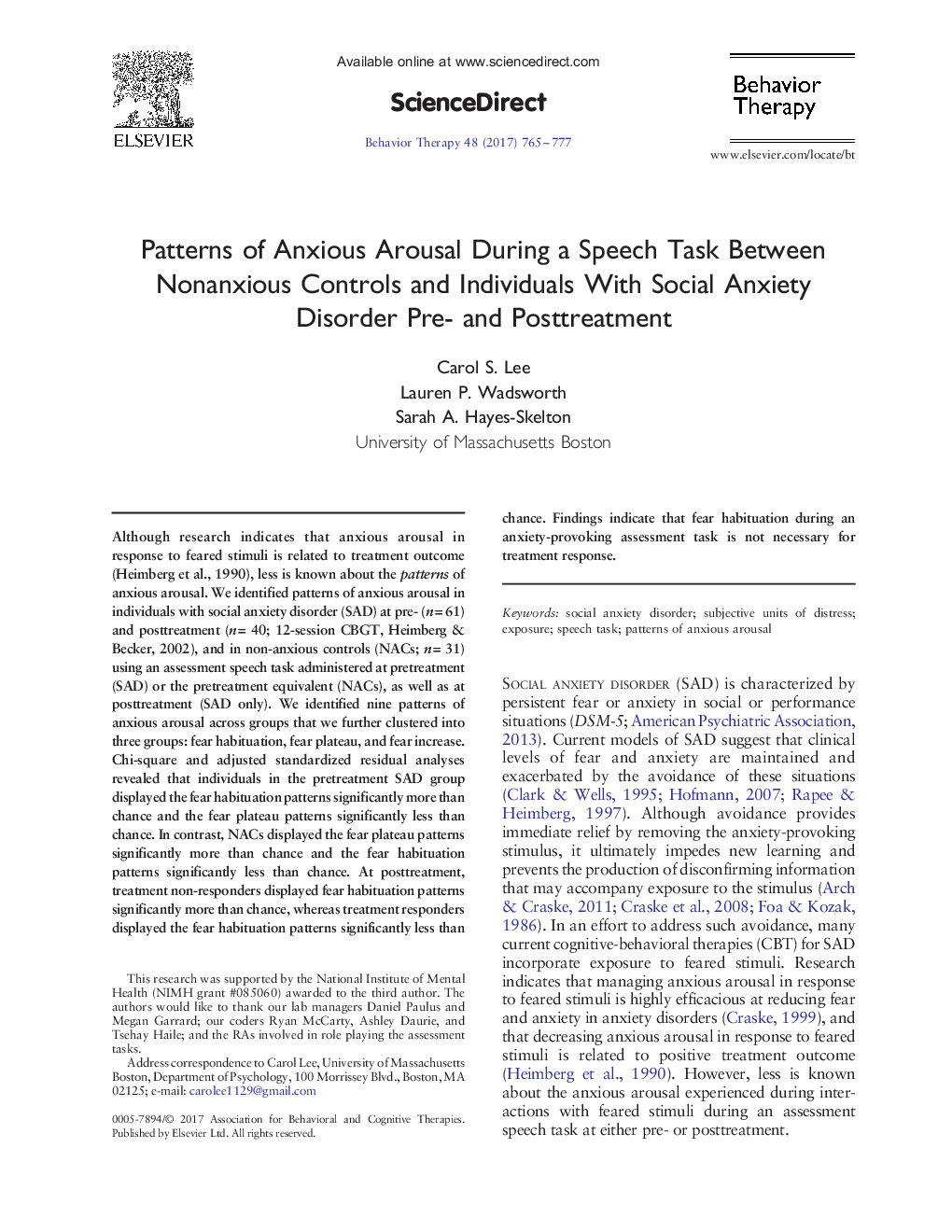| کد مقاله | کد نشریه | سال انتشار | مقاله انگلیسی | نسخه تمام متن |
|---|---|---|---|---|
| 5037967 | 1472732 | 2017 | 13 صفحه PDF | دانلود رایگان |
- We coded and examined patterns of anxious arousal during a speech task
- At pretreatment, individuals with SAD mostly displayed a fear habituation pattern
- Posttreatment nonresponders mostly displayed a fear habituation pattern
- Posttreatment responders mostly displayed patterns other than fear habituation patterns
- Nonanxious controls mostly displayed a fear plateau pattern
Although research indicates that anxious arousal in response to feared stimuli is related to treatment outcome (Heimberg et al., 1990), less is known about the patterns of anxious arousal. We identified patterns of anxious arousal in individuals with social anxiety disorder (SAD) at pre- (n = 61) and posttreatment (n = 40; 12-session CBGT, Heimberg & Becker, 2002), and in non-anxious controls (NACs; n = 31) using an assessment speech task administered at pretreatment (SAD) or the pretreatment equivalent (NACs), as well as at posttreatment (SAD only). We identified nine patterns of anxious arousal across groups that we further clustered into three groups: fear habituation, fear plateau, and fear increase. Chi-square and adjusted standardized residual analyses revealed that individuals in the pretreatment SAD group displayed the fear habituation patterns significantly more than chance and the fear plateau patterns significantly less than chance. In contrast, NACs displayed the fear plateau patterns significantly more than chance and the fear habituation patterns significantly less than chance. At posttreatment, treatment non-responders displayed fear habituation patterns significantly more than chance, whereas treatment responders displayed the fear habituation patterns significantly less than chance. Findings indicate that fear habituation during an anxiety-provoking assessment task is not necessary for treatment response.
Journal: Behavior Therapy - Volume 48, Issue 6, November 2017, Pages 765-777
